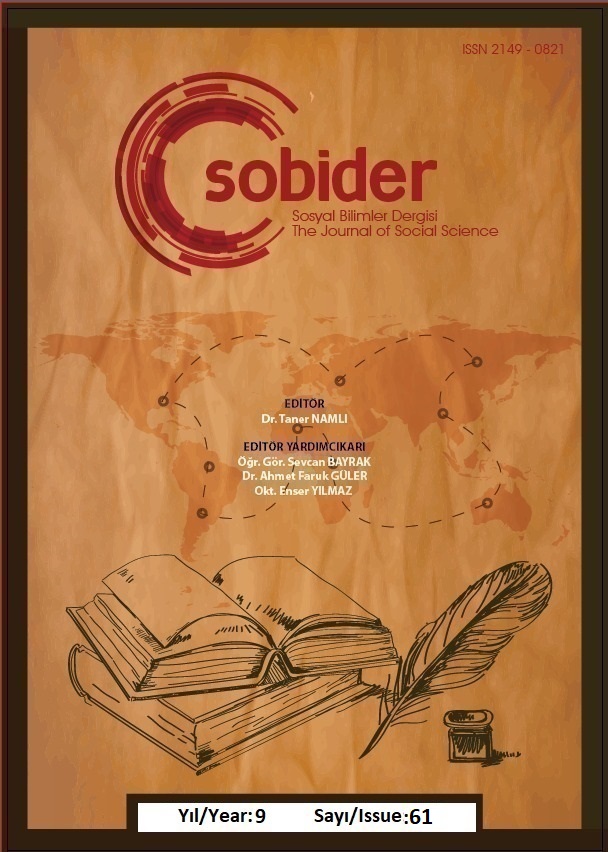Author :
Abstract
Şok reklamlar, alışılmışın dışında içerik üreten, hedef kitleyi bilinçli olarak rahatsız eden, tüketiciyi sorun üzerinde düşünmeye iten, izleyiciyi heyecanlandıran reklam türüdür. Bir marka şok reklamlarla, ürün ya da toplumsal bir soruna dikkat çekmek için keskin görüntüler kullanmaktadır. Böylelikle tüketicinin soruna odaklanmasını, konuya dikkat etmesini, reklamın paylaşılmasını ve farkındalık oluşturmasını hedeflemektedir. Şok reklamlar, alışılmış reklamların dışında olduğundan dikkat çekiciliği sebebiyle farklı ürün gruplarında kullanılabilmektedir. Siyasi kampanyalar, toplumsal sorunlar, sağlık, silahsızlanma gibi konularda da mesajın güçlü etkilerini yansıtmaktadır. Ancak şok reklamlarda önemli bir sorun, toplumun büyük bir kesiminin reklama karşı olumsuz tepki gösterme ihtimalidir. İrrite edebilecek hastalık görüntüleri gibi içeriklerle birlikte dini konular ve cinsellik temaları toplumda hassasiyet oluşturabilmektedir. Bu durum, reklamı istenmeyen yapabilmekte ve amaca ulaşmayı engelleyebilmektedir. Şok reklam kullanımının marka için riskli olduğu ve dozunun iyi ayarlanması gerektiği unutulmamalıdır. Bu çalışmada farklı marka ve ürün gruplarında yer alan şok reklam örnekleri göstergebilimsel yöntemle incelenmiştir. Sonuç olarak tiksinti veren ve ürpertici görsellerle şok etkisi yaratılmaya çalışıldığı görülmüştür.
Keywords
Abstract
Shock ads are a type of advertisement that produces unusual content, consciously disturbs the target audience, pushes the consumer to think about the problem, and excites the audience. A brand uses sharp images to draw attention to a product or societal problem, with shock ads. Thus, it aims to focus the consumer on the problem, pay attention to the issue, share the advertisement and create awareness. Since shock ads are outside the usual ads, they can be used in different product groups due to their attractiveness. Political campaigns also reflect the strong effects of the message on issues such as social problems, health and disarmament. However, a major problem with shock ads is the possibility that a large segment of society will react negatively to the advertisement. Religious issues and sexuality themes, along with content such as images of illness that may irritate, can create sensitivity in society. This may make advertising undesirable and prevent the achievement of the purpose. It should be remembered that the use of shock advertising is risky for the brand and its dose should be well adjusted. In this study, shock advertising samples in different brands and product groups were examined by semiotic method. As a result, it was seen that a shocking effect was tried to be created with disgusting and creepy visuals.
Keywords
- Banyte J., Paskeviciute K. ve Rutelione A. (2014). Features of Shocking Advertising Impact on Consumers in Commercial and Social Context, Innovative Marketing, 10(2), 35-46.
- Cockrill A. ve Parsonage I. (2016). Shocking People Into Action: Does It Still Work? An Empirical Analysis of Emotional Appeals In Charity Advertising, Journal of Advertising Research, 56(4), 401-413
- Daren W.D., Frankenberger K. D. ve Manchanda R. V. (2003). Does It Pay to Shock? Reactions to Shocking and Nonshocking Advertising Content among University Students, Journal of Advertising Research, 43(3), 268-280
- Engelbart S. M., Jackson D. A. ve Smith S. M. (2017). Examining Asian and European Reactions within Shock Advertising, Asian Journal of Business Research, 7 (2), 37-56.
- Hagenbuch D. J. (2015). Should Advertising Shock?, Journal of Biblical Integration in Business, 18(2), 54-66.
- Hassem T. N., Alnsour M., Hashem F. N., Hashem A. N., Hamideh O. S.M.A. (2021). The Impact of 'Shockvertising' on Consumer Behavior: Investigating Its Influence on the "Why Buy" Aspect, Wseas Transactions on Business and Economics, 18, 1330-1338
- Lee Michael S.W., Septiano F., Frethay-Bentham C. ve Gao E. (2020). Condoms and Bananas: Shock Advertising Explained Through Congruence Theory, Journal of Retailing and Consumer Services, 57, 1-11.
- Machova R., Huszarik E. S. ve Toth Z. (2015). The Role of Shockvertising in the Context of Various Generations, Problems and Perspectives in Management, 13(1), 104-112.
- Matusitz J. ve Forrester M. (2013). PETA Making Social Noise: A Perspective on Shock Advertising, Portuguese Journal of Social Science, 12(1), 85-100
- Mukattash I. L., Dandis A. O., Thomas R., Nusair M., Mukattasl T. L. (2021), Social Marketing, Shock Advertising and Risky Consumption Behavior, International Journal of Emerging Markets, 1-18.
- Pavel C. (2014). Shock Advertising – Boundary Between Strategy and Insanity, Quality, 15, 232-235.
- Perez-Sobrino P. (2016). Shockvertising: Conceptual Interaction Patterns as Constraints on Advertising Creativity, Círculo de Lingüística Aplicada a la Comunicación 65, 257290.
- Sergeevna T. L., Gennadyevna K. L., Vasilyevna D. N., Aleksandrovna B. E., Evgenyevna S. (2017). Shock Advertising as Kind of Social Advertising, The Turkish Online Journal of Design, Art and Communication, 2050-2055





